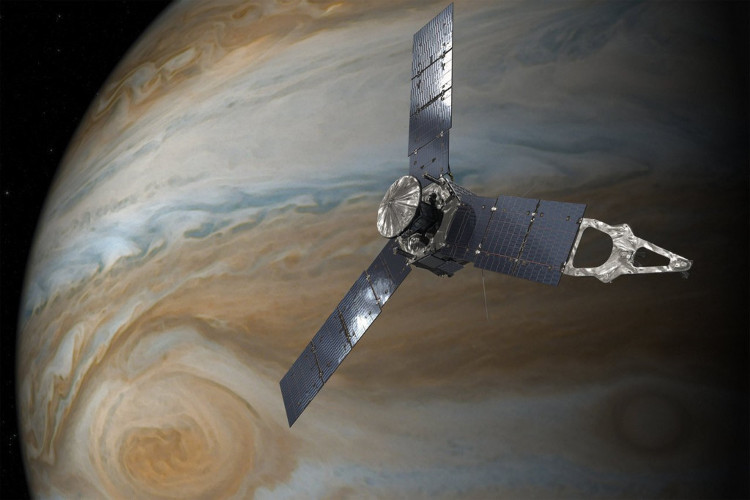NASA ship is about to approach super typhoon 16,000km wide on Jupiter
NASA's billion-dollar spacecraft will be approaching the big red dot, super typhoon sweeping through 350 years on Jupiter.
The Juno of the US Aeronautics Agency (NASA) will fly directly through the Great Red Spot , the famous storm of 16,000km in diameter on Jupiter on July 10, according to Phys.org. This will be the first close-up observation of humans for this giant storm.

Juno is about to call the famous super typhoon on Jupiter.(Photo: NASA).
The big red dot may have existed for more than 350 years and has been watched by scientists since 1830. "The mysterious big red dot on Jupiter may be the most famous feature of the planet," said Scott Bolton, scientist. The main study in the Juno project at the Southwest Research Institute in San Antonio, Texas, USA, said.
Large red dots on Jupiter's surface.(Video: NASA).
"The strange storm has swept the planet's largest planet for centuries. Now Juno and the cloud-based observations will come close to see how far the storm is, it works like how and what makes it so special, " Bolton said.
Collect data about the big red dot is a mission in the 6th to fly through Jupiter-covered clouds of the Juno ship. The ship will fly over perijove (positioned on orbit near the center of Jupiter) at 855 am on July 11. In this position, Juno will be about 3,540 km away from Jupiter's top cloud. After 11 minutes 33 seconds, Juno will pass 39.771km and be just above the red cloud covering the big Red Spot.
Strange sounds from Saturn confuse NASA scientists.(Video: NASA).
The ship will pass 9,000km above the clouds of the Great Red Spot. All 8 devices on board and JunoCam cameras were turned on during this flight.
"Success in collecting scientific data on Jupiter is a testament to the spirit of dedication, creativity and technology of the Juno team. Each new approach helps us get closer to the center of the radiation belt. Jupiter also avoided the electron storms around Jupiter better than we imagined, " said Rick Nybakken, Juno project manager at NASA's Jet Propulsion Laboratory in Pasadena, California. share.
Simulation of the Cassini spacecraft's crashing journey into Saturn.(Video: NASA).
The $ 1.1 billion Juno spacecraft departs on August 5, 2011 from Cape Canaveral, Florida, USA. With the mission of discovery, Juno dived to the extreme near Mars's top cloud layer with a distance of 3,400km. In the past fly-bys, Juno explored beneath the cloud cover of Jupiter and studied aurora to learn more about the origin, structure, atmosphere and from the planetary book.
Preliminary results from the Juno mission help NASA scientists identify the largest planet of the solar system as a chaotic world with complex internal structures, ultraviolet aurora and polar storms in the polar regions.
- Flying through super typhoon that is 1.5 times bigger than Earth on Jupiter
- The Juno probe successfully approached super typhoon on Jupiter
- Tomorrow, NASA satellite officially approached Jupiter
- NASA's Juno spacecraft is about to approach Jupiter on July 4
- A series of wonderful images of Jupiter are sent from the Juno-NASA ship
- Super typhoon on Jupiter is narrowing
- Juno spacecraft successfully approached Jupiter for the third time
- For the first time, humans can discover Jupiter's deepest mystery
- Journey to discover Jupiter's ship Galileo
- The 10 biggest storms recorded in history
- NASA announces the latest map of Jupiter
- Super storm is enough to swallow 4 Earths
 Van Allen's belt and evidence that the Apollo 11 mission to the Moon was myth
Van Allen's belt and evidence that the Apollo 11 mission to the Moon was myth The levels of civilization in the universe (Kardashev scale)
The levels of civilization in the universe (Kardashev scale) Today Mars, the sun and the Earth are aligned
Today Mars, the sun and the Earth are aligned The Amazon owner announced a secret plan to build a space base for thousands of people
The Amazon owner announced a secret plan to build a space base for thousands of people